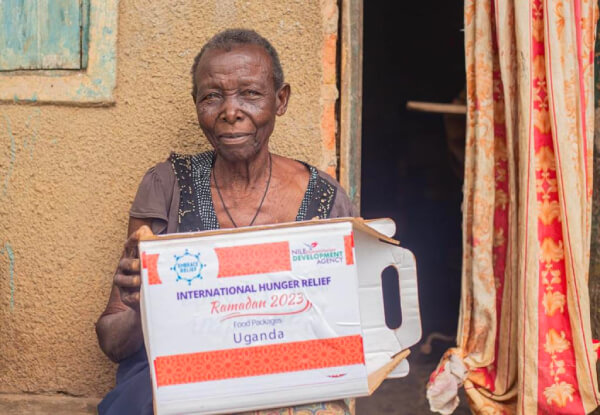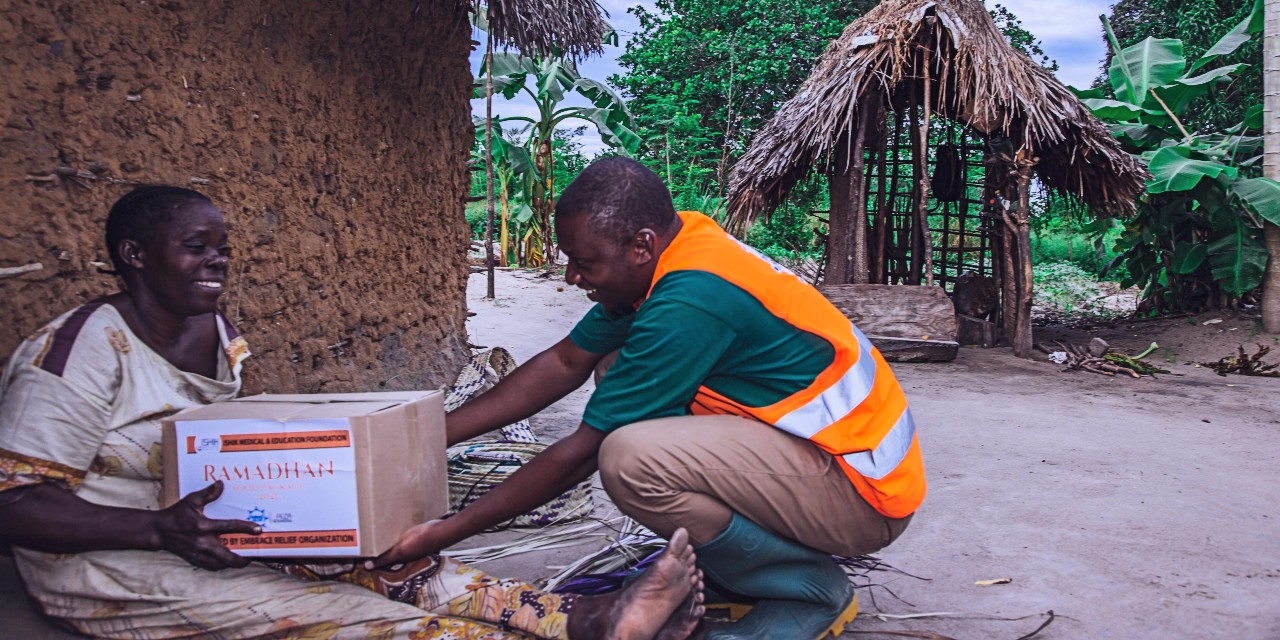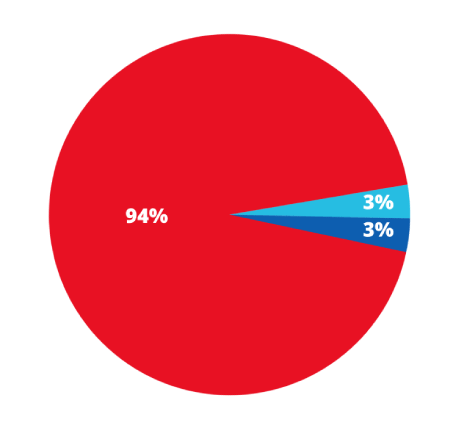Summary
- What we eat every day is important for our health. But how much we eat is even more important.
- Moderating the amount of calories we consume can have great long-term health benefits, so it can be useful to know what optimal portion sizes are for your meals.
- Most of us in America are fortunate enough to be able to choose the healthiest foods when we need them – but not everyone in the world is.
- Help Embrace Relief ease hunger around the world by donating to our International Hunger Relief campaigns, which support tens of thousands people each year in more than a dozen countries.

“How many calories should I eat in a day” is a question we all ask ourselves when we’re worried about our weight, or whether we’re getting enough protein, or whether we’re eating too many sweets.
Eating healthy foods, and the right amount of food each day, is one of the keys that can unlock a long life and help people avoid chronic health conditions like obesity, heart disease, stroke, diabetes, cancer, and weak bones and muscles.
But the answer to how many calories you need to eat will vary wildly based on a number of personal factors, including your age, sex, height, weight, physical activity level, and whether or not you are pregnant.
To maintain one’s body weight, the CDC recommends that an average adult man will need to consume between 2,000 and 3,000 calories per day, while the average adult woman should consume between 1,600 and 2,400 calories. You can find a rough guide to how many calories you require on the USDA’s Dietary Reference Intake calorie calculator.
But of course, those calorie counts should come through a balanced diet with a proper amount of fruits, vegetables, proteins, grains, dairy and oils. How much protein you eat in a day compared to how many fruits, vegetables and grains matters!
The 2020-2025 Dietary Guidelines for Americans, for example, suggests that adults should be eating roughly the following amounts per week to maintain a balanced and healthy diet:
- 25-to-30 ounces of meat, poultry and eggs;
- 8-to-10 ounces of seafood;
- 4-to-6 ounces of nuts, seeds and soy products;
- 15-to-20 cups of vegetables;
- 10-to-14 cups of fruit;
- 40-to-60 ounces of grains (split between whole grains and refined grains); and
- 21 cups of dairy
Experts say that fats should make up about 20 to 30 percent of your daily calorie intake, which comes out to roughly 50-to-70 grams of fat consumed per day. And it’s important to avoid too many sugary foods: regularly consuming more than 25 grams of sugar per day (for women) or 36 grams of sugar per day (for men) can cause long-term health issues.
Eating right and staying active will provide a lifetime’s worth of benefits, and will give you a clear path to health and longevity. That’s an attainable goal for most people in America, where nutritious food is plentiful and usually affordable.
But that’s not the case everywhere in the world.
According to the UN, nearly 700 million people worldwide are undernourished in 2023, and while that number has decreased since the height of COVID-19 in 2020-21, it is still a troubling increase since 2019. Approximately 140 million children under the age of 5 suffer from stunting (low height for one’s age), and 40 million children are affected by wasting (low body weight for one’s height) as a result of undernourishment.
Remember that 2,000-to-3,000-per-day calorie count recommended for healthy adult men? The global threshold for undernourishment is 1,800 calories per day for an adult man, which means at a minimum, undernourished people are consuming 200 fewer calories per day – a calorie deficit of 73,000 per year! Over time that means undernourished people have less energy to burn, and are more at risk for chronic health issues.
Humans produce more than enough food for everyone to eat healthy, reach their physical potential, and go on to live productive adult lives. Yet hunger persists around the globe due to conflict, climate change, structural poverty, and other ills.
Solving the problem will take time and a coordinated, worldwide effort. In the meantime, each of us can help lessen the burden for those people who are hungry right now.
Help feed people in need with Embrace Relief
That’s where the Embrace Relief Foundation comes in. Providing food to people in need around the world is a foundational part of our work. We support and operate food distributions throughout the year in dozens of countries, delivering much-needed nutritious food to people in need around the globe.
Our annual International Hunger Relief campaigns make the greatest impact: during our two International Hunger Relief 2023 campaigns alone, Embrace Relief delivered food packages and meat packages to more than 150,000 people in over 20 countries, from sub-Saharan Africa and Yemen, to Afghanistan and Indonesia, from Greece to the United States.
Easing hunger is a team effort, and we can’t do any of this without you. Donate to Embrace Relief’s Hunger Relief efforts in the box below and you can be part of the solution for the many millions of people living with hunger around the world. Your donation will support food distributions in one of the many countries we serve – and every dollar you donate makes a difference.
So please, donate today. Every contribution you make helps one more family go to bed on a full stomach, and brings us one small step closer to ending world hunger.






















